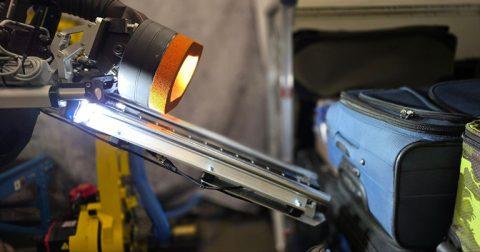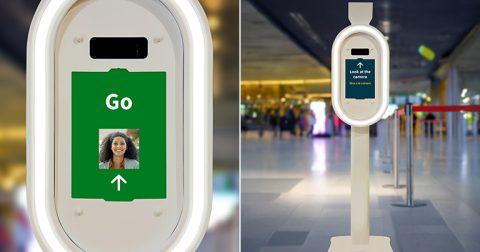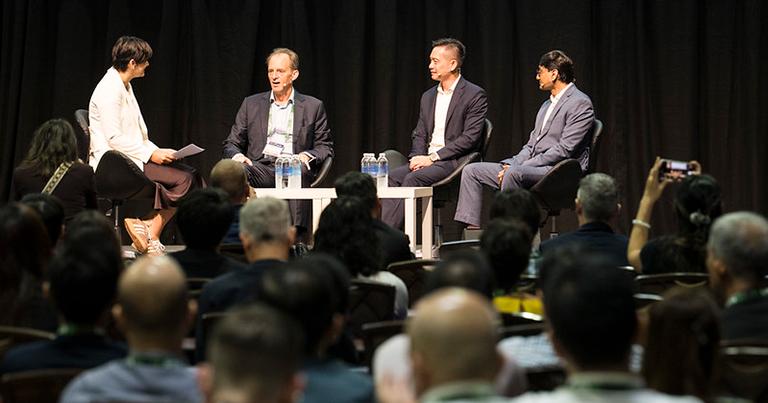
The 15th anniversary edition of APEX FTE Asia Expo, which took place in Singapore on 11-12 November 2025, opened with a headline panel that brought together three influential voices shaping the future of aviation across APAC. Jayson Goh, Executive Vice President, Airport Management, Changi Airport Group; Richard Nuttall, President, Philippine Airlines; and Sumesh Patel, President, Asia Pacific, SITA, joined BBC News Asia Business Correspondent Suranjana Tewari to explore how the region is managing surging demand, capacity limitations, evolving passenger expectations, and rapid advances in artificial intelligence (AI) and automation. Together, they explored how the Asia-Pacific region can manage surging demand while navigating supply chain constraints, sustainability pressures and rapid advances in AI and digital identity.
During the discussion, it became clear that the air transport sector in the APAC region is growing at remarkable speed, but airlines and airports are still navigating long-tail operational and supply chain constraints, shifting customer profiles, workforce transformation, and the pressure to accelerate net-zero progress.
View the full APEX FTE Asia Expo 2025 report >> Mark your diary for APEX FTE Expo Asia, Singapore, 18-19 November 2026 >>Growth opportunities amid long post-pandemic aftershocks

Kicking off the discussion, Philippine Airlines’ President Richard Nuttall offered an honest assessment of the region’s recovery. “We’re all still recovering from COVID,” he said. “The growth is absolutely there, especially in this region, but the lag remains. We’re still trying to get engines back on aircraft. If you order a new widebody today, it’s seven years out.”
Nuttall highlighted two simultaneous pressures: a sustained surge in demand and a constrained infrastructure environment. Manila’s main airport, now under new private management, may unlock 20% more slots – but the airline expects that capacity to be absorbed within four to five years. Aircraft interior refreshes, meanwhile, are delayed until 2028 due to global supply chain backlog.
Yet passenger behaviour is shifting in positive ways. “Leisure travellers are now willing to upgrade into premium cabins,” Nuttall shared. “That changes how we think about the onboard product.”
“The growth is there,” he summarised. “The question is: how do we meet the demand when infrastructure and supply chains are the bottleneck?”
Rethinking the airport experience
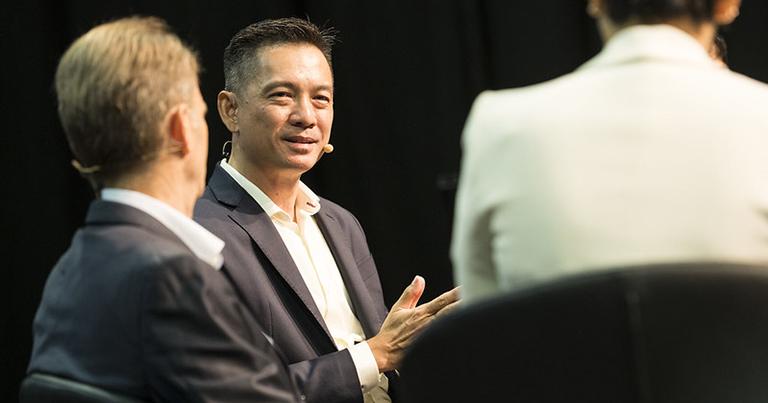
For Changi Airport Group, the conversation is no longer just about processing volume, it’s about how people use the airport. Goh explained that APAC leads the world in passenger growth, driving significant pressure on capacity while also creating space to rethink the airport experience.
“People are spending more time with us,” he said. “So beyond what we traditionally offer, we’re looking at new amenities – wellness, family spaces, services for seniors. Travellers expect to use their time meaningfully.”
Contrary to assumptions that older travellers might resist digital tools, Goh reported that many senior passengers at Changi are now eager adopters once they are comfortable with smartphones.
“Don’t be surprised, some of our seniors are using technology faster than we thought. Once they learn how to use a smart device, they expect services to be digital, seamless, and responsive.”
Today, over 80% of Changi’s passengers use self-service bag drops, and around 30% check in online and proceed directly to automated immigration without visiting a counter. “If we can virtualise the entire departure experience, we will,” Goh said. “The last thing anyone wants at an airport is a queue.”
AI is how we bridge the capacity gap
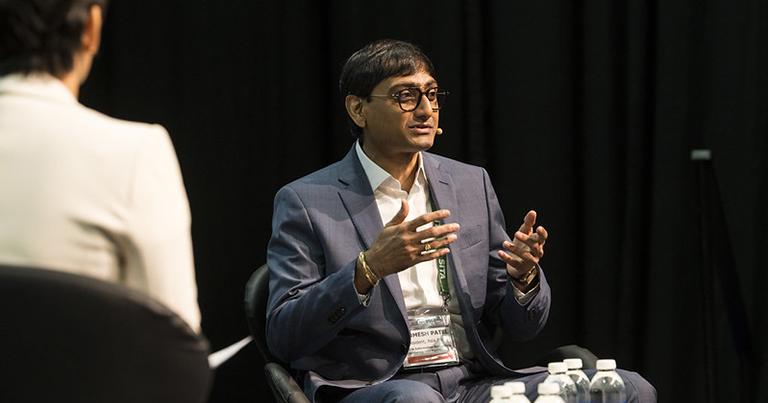
SITA’s Sumesh Patel pointed to a key shift shaping the next chapter of aviation technology: younger, digital-first passengers expect more, but are often the least satisfied.
“They use the technology the most, but they are the most dissatisfied,” Patel said, referencing SITA’s latest Passenger IT Insights research. “The challenge now is not adding more technology. It’s making it seamless, predictive, invisible.”
Patel described a future where AI identifies a misrouted bag during transit, automatically rebooks it, and notifies the passenger before they land. “You may not be happy the bag is delayed, but at least you know where it is and when it’s coming.”
This shift from interaction to anticipation will be essential as infrastructure limitations persist. “AI is how we bridge the capacity gap,” Patel added.
Looking ahead, Patel highlighted two major areas of industry momentum: mobile-based digital identity and the decoupling of baggage from the airport touchpoint.
SITA is working with global partners to develop ICAO-standard digital travel credentials – mobile-based, secure digital passports that could enable end-to-end identity verification before arriving at the airport. “Singapore is already implementing parts of this,” Patel said. “But the goal is global interoperability.”
He also described a proof of concept developed with Singapore Airlines, Changi Airport Group and Singapore University of Technology and Design (SUTD) in which baggage is collected directly from hotels and processed using a mobile kiosk that prints tags, validates documents and performs security checks. “The technology exists,” Patel emphasised. “The challenge is regulatory alignment.”
Technology as an enabler – not a replacement
One theme ran consistently through the panel: automation must elevate frontline staff, not sideline them. At Changi, self-service check-in and bag drops have shifted roles rather than removed them. Agents now roam the terminal, assisting passengers and resolving issues rather than conducting manual processes. “Technology replaces the mundane, not the human,” Goh said. “When staff can focus on serving passengers, everyone benefits.”
Philippine Airlines sees a similar impact in customer support. Increasing volumes of changes and enquiries are handled via chatbots and WhatsApp, supported by AI-driven tools for agents. “There’s always the option to speak to a human,” Nuttall said. “Some passengers want that, and we respect it.”
This shift in how technology is deployed naturally led the panellists to a broader conversation about people, specifically, how organisations can equip their workforce to thrive as automation reshapes roles. While technology is streamlining routine tasks and freeing staff to focus on higher-value interactions, its success ultimately depends on having the right talent, skills and support in place, which all three organisations are investing into.
Committed to sustainability goals
Despite the complexity of growth, sustainability remains firmly on the agenda. Changi continues to invest in solar energy, electrification of airside vehicles, waste reduction and the rollout of SAF. “We’re committed,” Goh said. “The momentum is accelerating.”
SITA, carbon-neutral since 2021, is investing in AI-based fuel optimisation tools that can cut emissions by up to 5%, as well as new systems for auditable, full-organisation carbon reporting in support of regulatory requirements. “Every small efficiency matters,” Patel said. “Technology helps us find them.”
A region defined by collaboration and fast-rising opportunity
The panel closed by turning to the broader regional outlook, noting that markets such as the Philippines and India, with populations of over 100 million and 1.4 billion respectively, and strong GDP growth trajectories, will shape much of APAC’s aviation future. With demand accelerating across these high-growth economies, the speakers agreed that progress will depend on collaboration, agility and a willingness to adopt new ways of working. Innovation must be tailored to the operational realities of each airline and airport, while technologies such as AI, biometrics and digital identity will play an increasingly central role in delivering seamless, scalable passenger experiences. Each leader outlined priorities for the year ahead, from strengthening customer experience foundations to accelerating the deployment of smarter, more automated processes – a reminder that the region’s next chapter will be defined not just by growth, but by how effectively its aviation stakeholders innovate together.
Save the date for APEX FTE Expo Asia, 18-19 November 2026 – uniting the world in Singapore for the largest end-to-end passenger experience and innovation expo
Next year, we’re building on 15 years of incredible momentum, as our long-running regional show evolves into a true global mega event with the launch of the unified APEX FTE Expo Asia, bringing together two of the industry’s most respected brands under one roof at the Marina Bay Sands. APEX will bring its largest event, APEX Global EXPO, to Singapore, combining its unrivalled customer experience heritage with FTE’s long-established regional innovation APAC event, which will now take on a broader global focus.
This powerful new collaboration will unite the world in Singapore for the largest end-to-end passenger experience and innovation expo, connecting airline, airport, and technology leaders from across APAC and beyond to showcase the ideas, solutions, and partnerships redefining the future of travel.
With more than 3,000 participants expected, including representatives from 100+ airlines and airport operators from around the world, attendees will experience a dynamic exhibition and conference programme featuring C-suite interviews, case studies, and discussions exploring the strategies, technologies, and collaborations driving the next era of air transport innovation.
Mark your diary for APEX FTE Expo Asia, Singapore, 18-19 November 2026 >>
